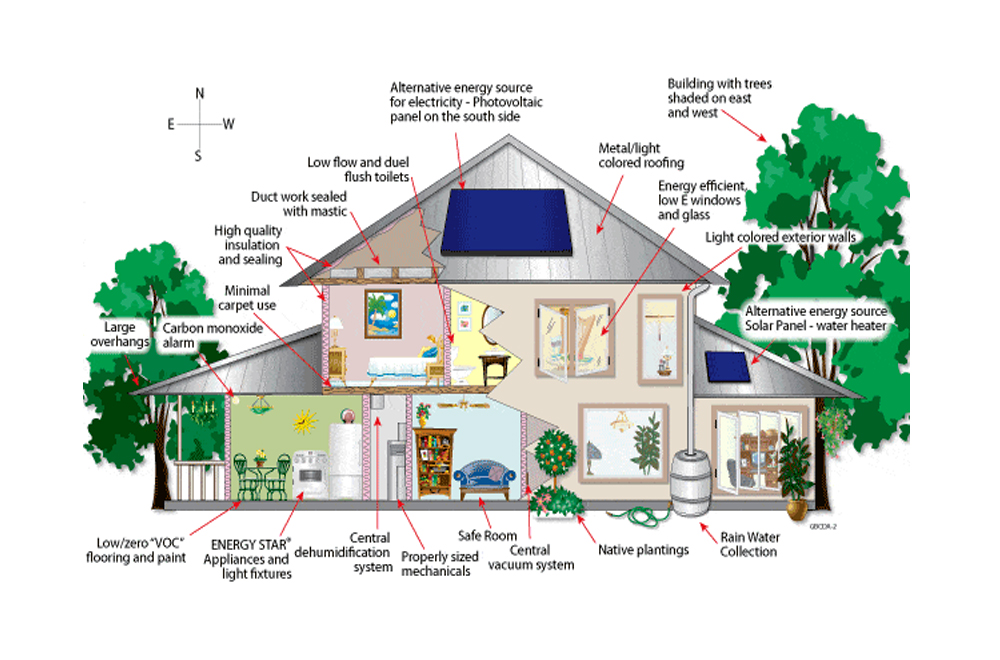As a contractor, what’s your favorite part of the job? For most contractors, it’s the digging in the dirt, hammering nails, or laying tile. Others among us would say that seeing the smile on a project owner’s face at site turnover makes it all worthwhile. Don’t forget those profits, either. Put simply, construction for most of us is worthwhile because we get something finished which is valuable to someone else. Then we get paid for it.
Done right, our projects should make us a profit that can be invested in the business. As much as we enjoy the actual work of building, it’s difficult to accomplish those tasks without an accurate estimate of how much construction material we need to buy. This materials list is often called a takeoff. Here’s what you need to know about takeoffs and their preparation.

Table of Contents
ToggleWhat is a Material Takeoff?
Briefly, a takeoff is a list of the construction materials that you will need to complete a construction project or portion thereof. Depending on its scope, a takeoff can cover a subset of materials (plumbing, electrical, etc.) or the entire project. These material requirements are determined by “taking off” the materials information from blueprints, hence the name.
Let’s unpack this a bit. Construction takeoffs come in more than one type, depending on its purpose. Some takeoffs are done for the purpose of estimating costs, while others are simply a detailed shopping list. If performed for an estimate, takeoffs will be accompanied by the price of each unit of materials for the project scope being estimated. Therefore, a takeoff for a deck will list how many 2×4 beams, pieces of railing, screws, brackets, and more, along with their prices. Takeoffs of this type will try to be as accurate as possible in terms of what stays in place.
On the other hand, a materials takeoff intended to be used as a shopping list will have a little bit less precision. While you never want to buy the wrong amount of materials, it’s important to account for waste and package sizes. For instance, you might not be able to buy exactly 532 screws.
Instead, you might need to get 540, which accommodates a minimum package size of 10. Alternatively, you might have a few of those screws left over from another project and be able to purchase only 530. Another difference here is that the shopping list takeoff won’t have prices associated with them. This is both because you might shop around to save money, and because a foreman might not need that information. Just order what you need. Estimating and purchasing are intertwined, but not so much so that dollars and cents are needed at every turn.
What should be included?
A takeoff should be a highly detailed list of everything that’s needed to complete the project, along with the quantities. This means that you won’t include “lumber” in a takeoff. That term might be used as a category to help at the purchasing phase, but it won’t be the only information.
Instead, you’ll indicate the number of plywood sheets, species and size of each board needed, quantity and type of each wood trim, and so on. The same goes for types of plumbing pipes, electrical wire, and so on. Each of these items has a different price, so when you’re doing a takeoff as part of estimating you’ll need to carefully specify the unit price. Remember, a small error can have a significant effect on timeliness and profitability of the overall project.
Another thing you might include in a takeoff is the quantity and type of labor hours. This one won’t be on your “shopping list” takeoff, per se, but it’s an important part of costing. It also helps you plan the project, since you can see at a glance how much time a tradesman might need to spend on their part of the project. If you have this type of tradesman on staff, then you’ll probably be paying a different labor rate through payroll. You don’t pay them the same amount as a laborer, do you?
In addition, you’ll be buying the materials yourself rather than having the tradie provide them. For situations where you’re hiring a subcontractor, including the hours in your takeoff will help determine how much they’re likely to charge you. Either way, it helps with scheduling issues down the line.
Construction Material Takeoffs for estimating require accurate prices
Simply knowing how much of a certain item you need to complete the project or unit isn’t enough to effectively estimate costs. Rather, you need to know how much these items are going to cost you. In some ways, this is the toughest part of estimating, because you are interested in potential future prices of each kind of material. Fortunately, there are some ways to increase accuracy.
Use past pricing experience
It’s an old saying that the best predicter of future performance is past performance. If a given construction material has a history if price increases at a relatively steady rate from one year to the next, it’s fairly safe to assume you’ll continue to have that experience. Manufacturers need to make money, so they do have to raise prices. However, they are aware that raising them too much without a good reason will risk driving away customers. Just like the bidding process, the price of materials must be fair.
For most established construction companies, there’s a proprietary database of materials costs. These are updated regularly based on invoices and local market intelligence. If that company uses a computer program for takeoffs or estimating, there’s a good chance that this information is integrated with the software for easier use. They’ll keep it free standing as well.
Take advantage of industry information
Another way to ensure accuracy is with timely industry information. Printed price lists aren’t always accurate, because the information can be obsolete as soon as they hit the shelves. However, they’re a good guide to help you see how prices change regionally, or for pricing items with a long history of price stability. With that said, there’s an increasing trend towards making this information available online. RH Means has a subscription database, and they also sell digital editions of their books. Both are updated throughout the year. Ideally, you’ll set your takeoff and estimating software to reference these tools in addition to the internal pricing lists.
Don’t forget suppliers
Finally, you can always get a price for something by reaching out to suppliers. Not only can this help you save money through competition, but those prices are always current and locally applicable. They’ll even tell you how fast something can be delivered. When there are disruptions in supply lines or transport availability, this information is valuable for project planning.
Material Takeoffs can be integrated with project management software
Want a good handle on how much of a material you’re using, and when? Keep track of everything using project management software. There are several kinds of project management software available for the construction industry, and each of them help you keep a project on track.
To use a takeoff in the project management system, you’ll need to associate it with the rest of your project information. This can be done several ways. For instance, some project management software will help you prepare the estimate and takeoff within the program. Just tag everything so it goes together, and you’re done. In other programs, you’ll have to add the takeoffs manually or import them from the estimating program.
If you integrate takeoffs, it’s easy to know when to bill a client for each item. It’s also easy to keep track of your construction budget, because you know how much you’ve used in materials, man hours, and more. While the construction industry has been slower to digitize than many others, this is a great way to save money. Being careful about waste and poor materials tracking can help your construction company boost profits through reduced costs.
Takeoffs can be used by whoever orders materials
If your construction company has a designated employee for all purchases, then the takeoff is a great way to help that person know what to order. This is significant, because the estimator and project foreman can all be different people, especially if you outsource estimates. In other words, the purchasing person doesn’t know what the estimator was thinking. With a takeoff, this doesn’t matter because the purchaser has a detailed list. Ideally, you’ll also have a record of the surplus materials on site. This way, the purchaser can alter the actual quantities ordered if appropriate to use those materials in the new project.
Takeoffs are done at different stages of a project
You only need one takeoff, right? Not necessarily. It depends on the purpose and scope of a takeoff. For firms that use the stick estimating method, a takeoff is almost always done at the estimating phase. That’s because they are going to charge the client for every 2×4 and light fixture. Besides being as complete of a list as possible, these takeoffs have full pricing information. Of course, if the client makes changes along the way, then the takeoff can be altered accordingly.
Another stage where you’ll see a takeoff done is with subcontractors. If an electrician is brought in from outside, then that person will determine the exact materials quantities needed. Often, this is done as part of a subcontracting bid. In addition, it’ll account for individual differences in waste materials and working style.
Finally, there are the takeoffs which are performed by some contractors after winning the bid. Contractors who do it this way often are using unit estimating and other, less detailed, methods. In this case, the contractors are hoping to save time by not taking off projects before they land the job. Other information has to be used in order to accurately estimate costs in this situation. However, it works well for some companies.
There’s more than one way to make a takeoff
Remember, the term “takeoff” comes from the phrase “take off (materials from) blueprints.” For that reason, you’ll nearly always need the blueprints to complete a takeoff. About the only exception is very small projects that don’t go through the architect process, such as adding a ramp to the shed. In that case, you probably know what’s needed from the beginning. When preparing takeoffs, there are two basic ways to do it.
Manual takeoffs
In this method, you’ll manually go through the blueprints and measure each wall, circuit, and component. Any sort of concrete work requires that you determine the required volume and support rebar, if any. You’ll count the doors, windows, and light fixtures, as well. Areas need to be measured for carpet, flooring, and tile. These numbers are used to determine how much of each construction material is required to finish the project. You can either try and add up everything for the entire project initially or do it by assembly. In the latter case, you’ll add up all the assemblies in the end to get total quantities.
Originally, all takeoffs were done manually. However, as with all manual processes it is prone to errors that cost time and money. Using the assembly approach helps with this, but it isn’t fool proof. Luckily, there’s another option: digital takeoffs.
Digital takeoffs
As with so many other things, takeoffs have gone digital. There are several types of construction software that will do these for you. In particular, there’s estimating software and dedicated takeoff software. You’ll also see some project management programs with a takeoff feature. Finally, estimating firms typically use computerized estimating software, and they’ll give you a digital takeoff too. Let’s look at how this is done.
First, the plans are uploaded into the program. Then, the program does most of the measurements, and you’ll tell the program which items to use in the takeoff based on client specifications. For instance, if the owner wants pine boards you’ll have to specify this over birch. Make any necessary adjustments, and the program will compile lists. Depending on your needs, you can also have the prices included.
We hope that this has demystified takeoffs to some extent. As you can see, this is more to a takeoff than just a materials list. Takeoff scope, intended use, and more can determine how it is formatted. However, in all cases it’s an exhaustive, detailed list of the requirements of whatever construction job is involved.






